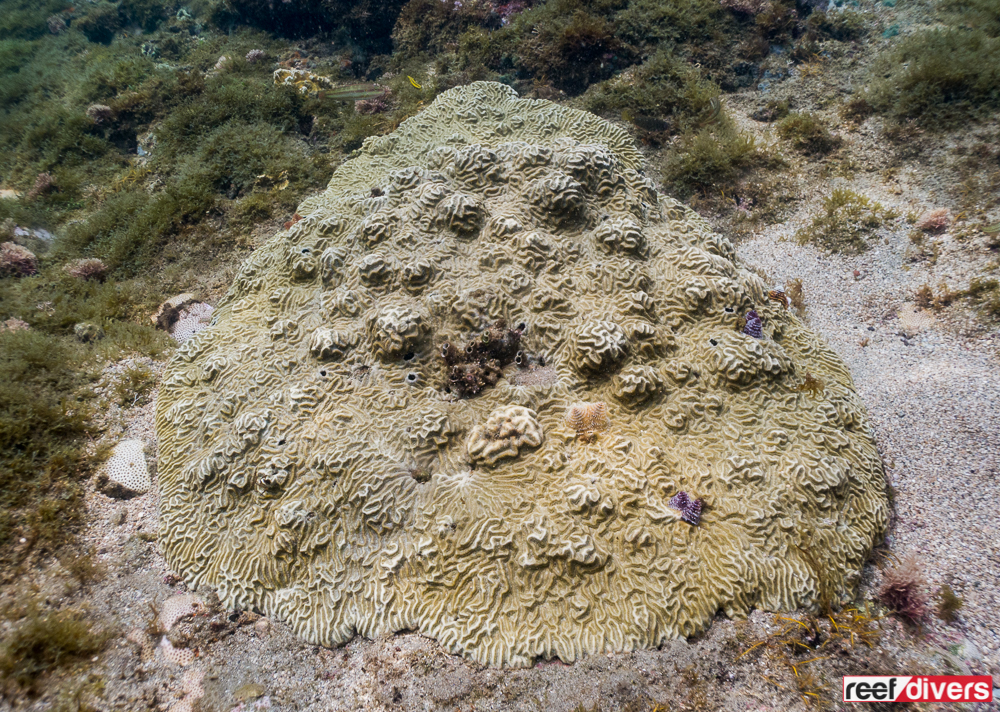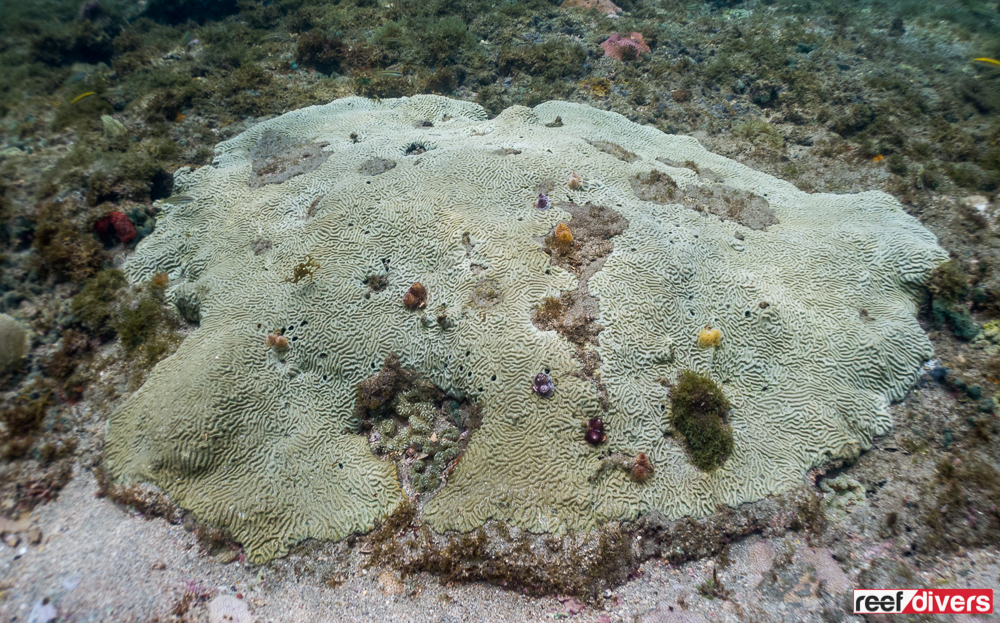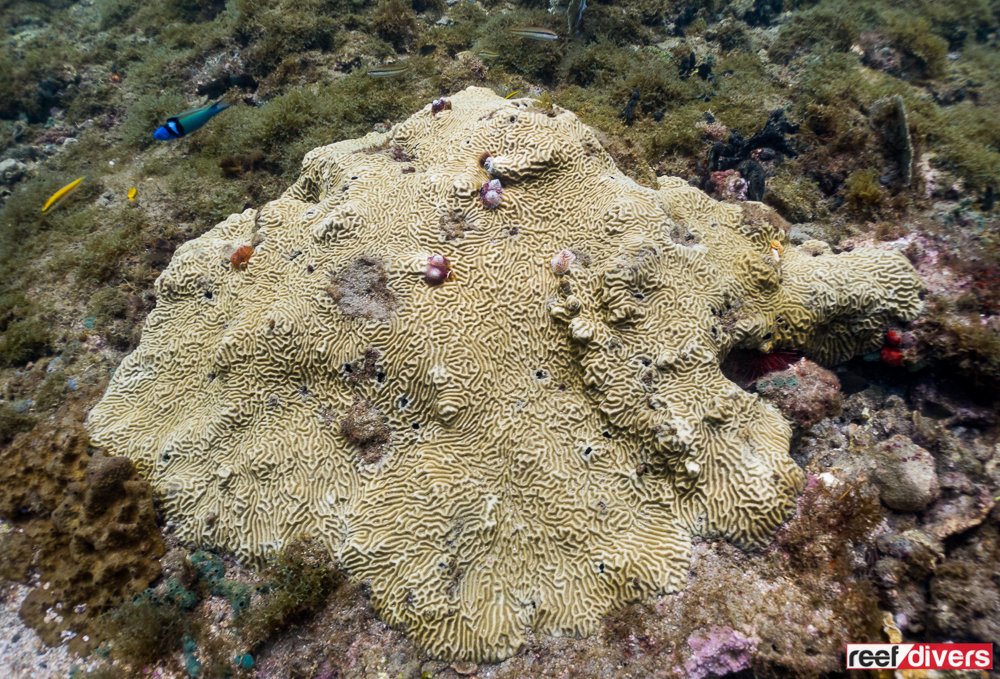Knobby Brain Coral
Psuedodiploria clivosa, the Knobby Brain Coral, is the third and final species of Diploria brain coral found in the Caribbean. P. clivosa has the thinnest ridges of all three species which grow in a tightly woven pattern.
In shallow habitats, Psuedodiploria clivosa can grow into large encrusting mounds that appear to be melting onto the rocks. These mounds are covered in knobby horns and bumps which are characteristic of the species.
This species of coral is most common in shallow water. We found several dozen large colonies growing at the Ensenada dive site in Tela Honduras, all between 2m and 4m depth (6 and 14 feet).

You can also find colonies with a fairly smooth surface which can be difficult to tell apart from the Symmetrical brain coral, Psuedodiploria strigosa. The biggest difference when comparing the two corals is the size and width of the ridges and valleys.
You can find Psuedodiploria clivosa down to 40m although I have found it to be more common in shallow water. The deeper you go you are more likely to find Psuedodiploria strigosa, which has wider ridges.

Interesting to note is that all the clivosa colonies we found in Tela had Christmas tree worms burrowed within the colony. As you approached the coral a dozen furry spirals would quickly retreat into their tubes.
There are three species of Diploria found in the Caribbean, each with its own unique characteristic. Psuedodiploria strigosa has a smooth surface compared to Psuedodiploria clivosa, the Knobby brain coral. And P. strigosa has narrow rounded ridges as opposed to the wide grooved ridges of Diploria labyrinthiformis.
1. Psuedodiploria clivosa, Knobby Brain Coral. 2. Psuedodiploria strigosa, Symmetrical Brain Coral 3. Diploria Labyrinthiformis, Grooved Brain Coral


Diploria clivosa and Diploria strigosa are now classified in their own genus Pseudodiploria.
The Coral Diaries series is a list of corals we have seen while diving around the world. We’ve created this series so that you can learn more about corals, and how to identify them on the reef. We encourage you to send us your coral pictures and leave a comment in the section below to learn more about the interesting species you’ve found while diving.


